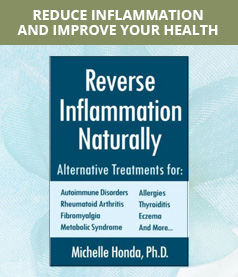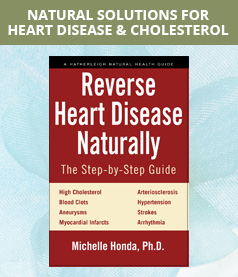
As human beings, it is our natural instinct to be on a quest for better health and a longer life. Everyday research is showing us more and more benefits from consuming vitamins, minerals and other phytochemicals. In growing numbers, a mind set of treatment mentality is shifting to one of being proactive in preventing illness before it occurs.
When we are looking at nutrients for building and maintaining heatlh, vitamin D holds a prominent place on the list of importance. The following dialogue will delve into the complexities of vitamin D and its many applications as it applies to our daily health. We will explore the hazards of vitamin D deficiencies, companion supplements, dietary sources, and appropriate dosages to include the various forms and their effectiveness respectively.
Several aspects of culture and lifestyle are inhibiting the availability of this sunlight vitamin. Today more and more adults are taking drastic measures to avoid the suns UV-rays. Once thought to be an uncommon condition of modern times, research has now shown that vitamin D deficiency is on the rise. People who may fall into this category are those who work long hours in offices or whose clothing and lifestyle keep them out of the sunlight. Also included are adults over 50, post menopausal women, dairy intolerant individuals, anyone living in cold or northern regions and overuse of sunscreen.
Winter Blues
Since winter is upon us, let’s take a look at how the lack of vitamin D poses a hazard to our health during these many days of reduced sunlight. As it happens, getting adequate exposure to the sun’s rays combats the condition SAD (seasonal affective disorder), sometimes called “winter blues.” Published research shows that vitamin D is an important nutrient for our brain as well as our body. In one such study, a mere five days of treatment with vitamin D (dosage of 400 – 800 IU per day) improved winter depression.(1) Further research involving lengthier trials supported the link between vitamin D and moods indicating the biochemical basis for SAD.(2) Whenever possible make an effort to get outside especially on bright days during the cold season.
Application of Vitamin D
A major application of vitamin D has to do with calcium absorption. It is virtually impossible for the body to properly assimilate calcium and phosphorus without vitamin D. When vitamin D supplies are insufficient the body then robs our bones for the calcium it needs. Healthy bones and teeth will begin to fade away if levels of vitamin D are not sustained.
Ongoing research of vitamin D and abnormal cell development as seen with cancer has shown great promise, particularly in the areas of colon, prostate and breast cancer. Vitamin D regulates the genes associated with cancers and autoimmune disease. (3)
Vitamin D helps in the growth of new skin cells therefore concerning disorders such as psoriasis and other itchy, flaking problems have been helped with higher levels of vitamin D.
In addition to inadequate sunlight, hereditary, kidney and liver disorders will inhibit the absorption of vitamin D. Deficiency of vitamin D leads to impaired bone mineralization contributing to bone softening diseases such as rickets, osteoporosis and osteomalacia.
Complexities of Vitamin D
Vitamin D3, also known as cholecalciferol, is a secosteroid structurally similar to steroids such as testosterone, cholesterol and cortisone. Cholecalciferol is the only natural form of vitamin D, manufactured in large quantities when our bare skin is exposed to the sunlight. All other forms are molecules that have vitamin D activity. Experts recommend a natural form of vitamin D rather than synthetic. (4)
Vitamin D2 (Calciferol) promotes a healthy heart and thyroid; aids metabolism and assimilation of calcium for healthy bone formation. Calciferol is not a naturally occurring vitamin within humans. It is produced by radiating fungus which form fat like substances called ergocalciferol. Being derived from plants, it is considered Kosher.
Importance of Calcitriol, Calcidiol
Calcitriol is the most potent steroid hormone in our bodies derived from cholecalciferol where it is manufactured from calcidiol in our kidneys and tissues. Calcitriol blood levels refer to a vitamin D deficiency testing, the only one required.
Vitamin D is a Prehormone not a hormone
Similar to cholesterol, the body turns vitamin D into two hormones, calcidiol and calcitriol which are then collectively called vitamin D. For instance, the body uses cholesterol to make hormones such as estrogen and testosterone, likewise the cholecalciferol taken from our skin or supplements is turned into hormones by the body.
How to take Vitamin D
Vitamin D is a fat soluble vitamin requiring the presence of fat for best absorption; preferably mono and polyunsaturated fats and always with a meal.
Companion Supplements
Calcium: promotes healthy teeth, gums, bones, neuromuscular activity, blood clotting
Phosphorous: promotes healthy metabolic function, bones, teeth
Vitamin C: promotes healthy immune system, aids in formation of collagen and iron absorption, destroys free radials
Vitamin A: promotes healthy skin, hair, bones, eyes, immune system, embryonic development, nervous system, brain
Iron and Zinc can be poorly regulated in the presence of vitamin D deficiency
Daily Dosage of Vitamin D
RDI (recommended dietary intake) for infants 6 months to 1 year is 400IU. For children, men and women aged 19-50 is 200IU. Men and women aged 51 to 70 is 400IU and adults past the age of 70, 600IU. However, in the absence of sunlight, 1000IU of cholecalciferol is required for children and 4000IU for adults. The Canadian Pediatric Society recommends 2000IU daily for pregnant and breastfeeding women. (5)
Dietary Sources
Fatty fish are natural sources of vitamin D such as catfish, mackerel, salmon, tuna in oil and sardines. Milk and grains are often fortified with vitamin D to minimize the risk of vitamin D deficiency.
Toxicity
Overexposure to sunlight may result in vitamin D toxicity affecting individuals equilibrium leaving them light headed or what is sometimes referred to as sunstroke.
The level of vitamin D found in normal food and supplements are too low to be toxic. However, an overdose of vitamin D usually only occurs when excessive doses of the prescription form are taken. (6)
The naturally rejuvenating benefits of vitamin D will help our bodies remain strong, vibrant and resistant to damage.
Copyright © 2016 – All Rights Reserved – Michelle Honda Ph.D.
Announcement
Look for my new forthcoming books “Reverse Heart Disease Naturally” (Jan.31, 2017) and “Reverse Inflammation Naturally” (May 31, 2017) and “Reverse Thyroid Diseases Naturally” (Fall 2017)
Where to Purchase:
Reverse Gut Diseases Naturally
Reverse Heart Disease Naturally
Hatherleigh Press Page Buy Book RGDN
Local Book Stores in US and Canada
Reference
1 Lansdowne AT.et al Vitamin D3 enhances mood in healthy subjects during winter. Psychopharmacology (Berl). 1998;135(4):319-23.
2 Vieth R, et al. Randomized comparison of the effects of vitamin D3 adequate intake versus 100mcg (4000IU) per day on biochemical responses and the wellbeing of patients. Nutrition Journal 2004;3:8
3 Marshall TG(February 2008) Vitamin D discovery outpaces FDA decision making. Bioessays 30 (2):173-83 doi:10.1002/bies 20708.PMID 18200565
4 Dietary Supplement Fact Sheet: 2007-09-10Vitamin D. National Institutes of Health .
5 The vitamin D miracle: Is it for real? March 8, 2008 Martin Mittlestaedt
6 Vieth R(1999). Vitamin D supplementation, 25hydroxyvitamin D concentrations and safety. Am J Clin Nutr 69 (5):842-56. PMID 10232622.
Disclaimer
While close attention was given to the accuracy of information in this article, the author accepts neither responsibility nor liability to any person with respect to injury, damage, loss or any circumstances involving alleged causes directly or indirectly related to the information in this article. The sole purpose is to educate and broaden ones awareness. This information is not meant to replace medical advice or services provided by a health care professional.













Follow Us!